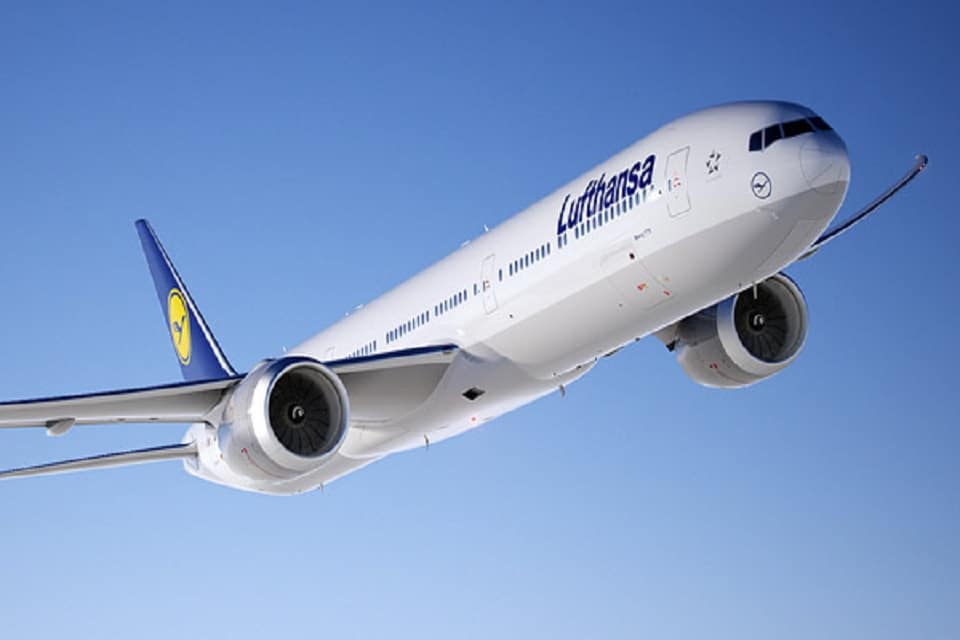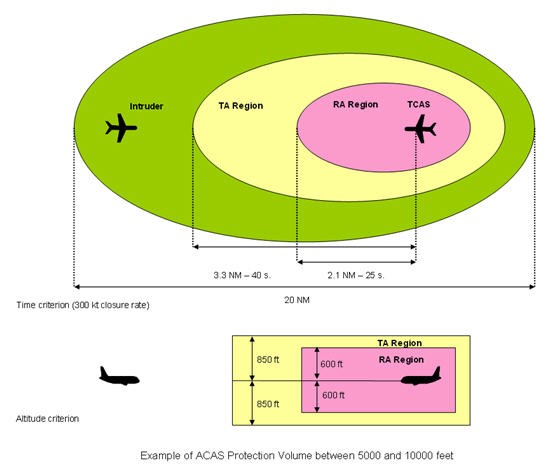Aviation
Flying into the Europe then your Aircraft should to be equipped with the latest ACAS
The Airborne Collision Avoidance System II (ACAS II) was introduced in order to reduce the risk of mid-air collisions or near mid-air collisions between aircraft.

What is ACAS ?
The Airborne Collision Avoidance System II (ACAS II) was introduced in order to reduce the risk of mid-air collisions or near mid-air collisions between aircraft. It serves as a last-resort safety net irrespective of any separation standards. ACAS II is an aircraft system based on Secondary Surveillance Radar (SSR) transponder signals. ACAS II interrogates the Mode C and Mode S transponders of nearby aircraft (‘intruders’) and from the replies tracks their altitude and range and issues alerts to the pilots, as appropriate. Non-transponding aircraft are not detected.
Types of ACAS
- ACAS I Gives Traffic Advisories (TAs) but does not recommend any manoeuvres.
- ACAS II Gives Traffic Advisories (TAs) and Resolution Advisories (RAs) in the vertical sense (direction)
- ACAS III Gives TAs and RAs in vertical and/or horizontal directions
How does it works ?

pic source : en.wikipedia.org

You are flying into the EU? As of 01/12/2015, your aircraft needs to be equipped with the latest airborne collision avoidance system.
Article 1
Subject matter and scope This Regulation lays down common airspace usage requirements and operating procedures for airborne collision avoidance to be fulfilled by:
(a) operators of aircraft referred to under Article 4(1)(b) and (c) of Regulation (EC) No 216/2008 undertaking flights into, within or out of the Union; and
(b) operators of aircraft referred to under Article 4(1)(d) of Regulation (EC) No 216/2008 undertaking flights within the airspace above the territory to which the Treaty applies as well as in any other airspace where Member States apply Regulation (EC) No 551/2004 of the European Parliament and of the Council
Article 2
Definitions For the purposes of this Regulation the following definitions shall apply:
(1) ‘airborne collision avoidance system (ACAS)’ means an aircraft system based on secondary surveillance radar (SSR) transponder signals which operates independently of ground-based equipment to provide advice to the pilot on potential conflicting aircraft that are equipped with SSR transponders;
2)‘airborne collision avoidance system II (ACAS II)’ means an airborne collision avoidance system which provides vertical resolution advisories in addition to traffic advisories;
(3) ‘resolution advisory (RA) indication’ means an indication given to the flight crew recommending a manoeuvre intended to provide separation from all threats or a manoeuvre restriction intended to maintain existing separation;
(4) ‘traffic advisory (TA) indication’ means an indication given to the flight crew that the proximity of another aircraft is a potential threat.
Article 3
Airborne collision avoidance system (ACAS)
1. The aeroplanes referred to in Section I of the Annex to this Regulation shall be equipped with and operated in accordance with the rules and procedures as specified in the Annex.
2. Member States shall ensure that operation of aeroplanes referred to in Article 1(2)(a) of Regulation (EC) No 216/2008 comply with the rules and procedures specified in the Annex in accordance with the conditions set out in that Article.
Article 4
Special provisions applying to operators subject to Council Regulation (EEC) No 3922/91 (1)
1. By derogation from provisions OPS 1.668 and OPS 1.398 of Annex III to Regulation (EEC) No 3922/91, Article 3 and the Annex to this Regulation shall apply for operators of aeroplanes referred to in Article 1(a).
2. Any other obligation imposed on air operators by Regulation (EEC) No 3922/91 as regards the approval, installation or operation of equipment shall continue to apply to ACAS II.
Article 5
Entry into force and application
1. This Regulation shall enter into force on the 20th day following its publication in the Official Journal of the European Union.
2. Articles 3 and 4 shall apply as of 1 March 2012.
3. By way of derogation from paragraph 2, in the case of aircraft with an individual certificate of airworthiness issued before 1 March 2012, the provisions of Article 3 and 4 shall apply as of 1 December 2015.
Original document: Download
source: EASA (European Aviation Safety Agency)
Note : Education Pursposes
Liked it ..!?
Share with your friends and family

Aviation
South Korea Introduces Cutting-Edge MRO Center for F-35 and IAI

South Korea is set to make waves in the aerospace industry with the establishment of a cutting-edge Maintenance, Repair, and Overhaul (MRO) hub for F-35 fighter jets and IAI (Israel Aerospace Industries) aircraft.
Central to this initiative is the specialization in converting Boeing 777-ERSF, colloquially known as the “Big Twin,” from passenger to freighter configurations. Under the terms of the agreement, IAI will spearhead the conversion of six B777-300ER and B777-200LR aircraft annually, commencing in 2024. This strategic move is in response to the anticipated surge in demand for wide-body freighter aircraft capable of long-haul flights.
Furthermore, South Korea’s forward-looking vision extends beyond aircraft conversion, with plans to establish a Lockheed Martin F-35 maintenance, repair, and overhaul depot at Cheongju Air Base by 2027. This strategic move not only enhances the operational readiness of South Korea’s air force but also positions the nation as a regional hub for F-35 maintenance expertise.
In preparation for this expansion, thirty Republic of Korea Air Force (ROKAF) engineers and technicians are slated to undergo intensive maintenance training in the United States in 2025, a testament to South Korea’s commitment to fostering local expertise and talent.
IAI’s visionary approach to certification and collaboration underscores the potential for transformative change. With plans for the 777-300ERSF certification process set to unfold in Israel, followed by the rigorous scrutiny of regulatory agencies such as the US Federal Aviation Administration (FAA), the stage is set for the ‘Big Twin’ to soar to new heights of success.
In partnership with esteemed entities like STK and Incheon International Airport Corporation, this collaboration promises to unleash a wave of benefits, amplifying the resilience and competitiveness of the Korean aviation sector while catalyzing job creation and economic prosperity.
Aviation
Lockheed Martin Expresses Interest in Joining AMCA Project

Lockheed Martin, a leading global aerospace and defense company, is demonstrating its dedication to strengthening collaborations with India’s research, industry, and academic sectors. With its rich experience in the aerospace industry and renowned for building some of the world’s most advanced jets, Lockheed Martin is now exploring opportunities to contribute to India’s aerospace sector, potentially providing a significant boost to aerospace technology in the country.
Randy Howard, Vice President of Global Pursuits at Lockheed Martin Aeronautics, recently underscored their interest in exploring “advanced transfer of technology opportunities” with Indian partners, signaling a proactive approach towards fostering technological exchange and advancement in the aerospace domain.
India has been at the forefront of fighter jet development since the 1970s, having produced its own cost-effective fighter jets and combat helicopters, while continually upgrading to maintain competitiveness on a global scale.
Lockheed Martin stands as a dominant force in the aircraft industry, renowned for developing cutting-edge planes like the F35 and F22, some of the most advanced fighter jets globally. They’ve also contributed to projects like the South Korean KF21 aircraft for defense purposes through collaborations.
Now, Lockheed Martin has set its sights on India’s defense sector manufacturing processes, expressing interest in partnering with India on its most anticipated project, the Advanced Medium Combat Aircraft (AMCA), likely to be a 5th generation fighter jet for the Indian military.
Their proposed collaboration could involve a spectrum of advanced technologies, including the Auto Ground Collision Avoidance System (Auto GCAS), a life-saving technology that intervenes to prevent ground collisions, thus significantly enhancing flight safety for Indian pilots.
Lockheed Martin is extending its expertise to design and develop an indigenous cockpit for the F-21 fighter jets, which India is procuring. This collaboration with Tata also includes the development of fighter jet wings. Established in 2023, this partnership adopts a “Ground Floor Design” strategy aimed at equipping India with an in-depth comprehension of 5th-generation cockpit technology and Man-Machine Interface (MMI) systems.
As India’s Fighter jet program advances with finalized aircraft frame and engine prototypes, Lockheed Martin has expressed interest in joining the project. They see a groundbreaking opportunity in cooperative 5th Generation Fighter Development, potentially expediting the AMCA program’s progress through technology and expertise sharing.
Furthermore, Lockheed Martin is keen on collaborating on large-wing, jet-powered UAV platforms, which could enhance India’s unmanned aerial capabilities.
While discussions are ongoing, and specific collaboration details await finalization, this initiative represents a potentially transformative stride in India’s aerospace self-reliance journey and Lockheed Martin’s strategic engagement with the Indian market.
Aviation
Can Airline Seat Cushions Be Used As Life Jackets?

In the event of an aircraft ditching into water, there’s a common question: Can aircraft seats serve as an alternative to life jackets for flotation? The answer lies in understanding their respective functions.
While seat cushions can provide some buoyancy in water, they are not intended nor certified to function as life jackets. Their primary purpose is to offer cushioning for passengers during flight. On the other hand, life jackets are meticulously engineered to keep individuals afloat in water, equipped with buoyancy materials, secure straps, and reflective elements for visibility. They offer numerous advantages over mere cushions.
While a seat cushion might offer temporary assistance in staying afloat, it’s not a dependable substitute for a proper life jacket during an emergency. It’s crucial to utilize approved safety equipment when near bodies of water. A life jacket, designed to keep a person buoyant for extended periods, offers the rigidity needed for prolonged flotation and allows for easy movement of the arms to navigate effectively.
What fabric is used in aircraft seats?
Seats are meticulously designed to fulfill multiple purposes, ensuring passenger comfort, safety, and protection from unforeseen circumstances like fires and accidents. A typical design incorporates an aluminum frame with blocks of polyurethane foam affixed to it. Additionally, a layer of fire-resistant fabric, such as Kevlar or Nomex, is often applied over this framework, topped with a layer of cloth or leather.
Leather seats, while luxurious, are more expensive compared to traditional cloth seats. The majority of fabrics used in seat upholstery contain at least 90% wool fiber, with the remainder typically consisting of polyamide (nylon). Wool stands out as the primary fiber chosen for commercial airline seating fabric due to its desirable properties and suitability for such applications.
What is the lightest economy seat?
In recent times, airlines have been downsizing seat dimensions to accommodate more passengers, resulting in reduced cushion length and leg space. This contrasts with earlier times when airlines offered more generously cushioned seats and ample amenities.
According to Recaro Seats Company, their SL3710 model represents the lightest economy class seat available, weighing in at a mere 8 kg (17.6 lb.), setting a new standard in aircraft seating.
For individuals weighing more than 350 pounds, fitting into a standard economy-class seat can be a challenge due to the narrower dimensions. Economy seats, also referred to as “coach,” “standard,” or “main cabin” seats, typically range from about 40 to 48 centimeters in width, further emphasizing the need for more accommodating seating options.





















